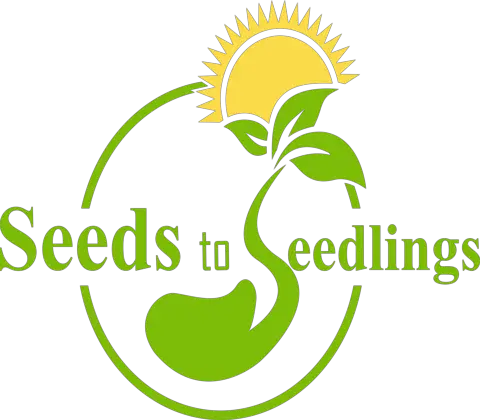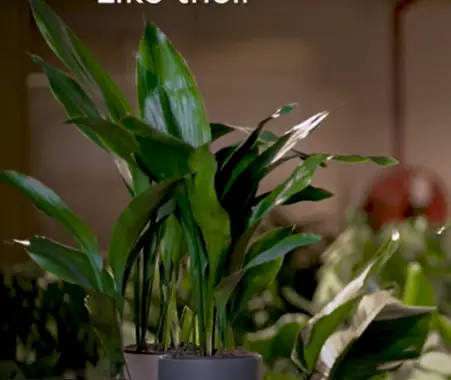Are you puzzled by your cast iron plant turning yellow? Don’t worry, we’ve got you covered! If you’ve noticed your resilient cast iron plant taking on a yellow hue, we have a solution that will help you bring it back to health.
This article will guide you through the possible causes of this issue and provide you with practical tips to revive your beloved cast iron plant. So, let’s dive right into understanding why your cast iron plant is turning yellow and how to address this concern effectively.
Why Is Your Cast Iron Plant Turning Yellow?
If you’re a plant lover, you might have come across the cast iron plant (Aspidistra elatior). With its ability to tolerate low light conditions and neglect, it’s often considered one of the most durable indoor plants. However, even the hardiest plants can encounter issues, and one common problem with the cast iron plant is the leaves turning yellow.
In this article, we’ll explore the various reasons why your cast iron plant may be turning yellow and discuss potential solutions to help you restore its vibrancy.
1. Overwatering
Overwatering is a common mistake that many plant enthusiasts make. While the cast iron plant is known to tolerate dry conditions, excessive moisture can cause the leaves to turn yellow. Over time, the roots may become waterlogged, leading to root rot and nutrient deficiencies.
To determine if overwatering is the cause of your cast iron plant’s yellowing leaves, check the moisture level of the soil. If it feels consistently wet or soggy, it’s a clear sign of overwatering. Additionally, inspect the roots for any mushy or blackened areas, as this indicates root rot.
To remedy overwatering, adjust your watering routine. Allow the soil to dry out partially between waterings, ensuring it’s not overly saturated. Consider using a well-draining soil mix specifically formulated for houseplants to improve the plant’s overall health.
2. Underwatering
While overwatering is a common issue, underwatering can also cause the leaves of your cast iron plant to turn yellow. The plant’s ability to withstand drought-like conditions doesn’t mean it can thrive without any water at all. When the soil becomes too dry, the leaves may start to lose their green color and turn yellow.
To address underwatering, check the moisture level of the soil by inserting your finger about an inch deep. If it feels extremely dry, it’s time to water your plant.
Ensure that you water thoroughly, allowing excess water to drain out of the pot’s bottom. Monitor the soil moisture regularly and adjust your watering schedule accordingly.
3. Lack of Light
The cast iron plant is known for its ability to tolerate low light conditions, but it still requires some level of light to thrive. Insufficient light can lead to chlorosis, a condition where the leaves lose their green pigment and turn yellow.
If you notice your cast iron plant turning yellow and it’s placed in a dimly lit area, consider moving it to a spot with more indirect sunlight. Ideally, place it near a north or east-facing window where it can receive bright, indirect light. Avoid exposing the plant to direct sunlight, as it can scorch the leaves.
4. Nutrient Deficiencies
Nutrient deficiencies can cause the leaves of your cast iron plant to turn yellow. The most common nutrient deficiencies in these plants are nitrogen (N), magnesium (Mg), and iron (Fe). Nitrogen deficiency typically results in overall yellowing of the leaves, while magnesium and iron deficiencies manifest as interveinal yellowing (yellowing between leaf veins).
To address nutrient deficiencies, you can use a balanced, slow-release fertilizer formulated for indoor plants. Follow the manufacturer’s instructions for application rates and frequency. Additionally, you can opt for a foliar spray specifically designed to treat nutrient deficiencies. Make sure to provide proper amounts of light, as nutrient absorption is dependent on energy from photosynthesis.
5. Temperature Stress
Extreme temperatures can stress your cast iron plant and cause the leaves to turn yellow. Cold drafts or exposure to freezing temperatures can damage the plant’s foliage and lead to discoloration. Similarly, excessively high temperatures can also cause stress and result in yellowing leaves.
To avoid temperature-related stress, keep your cast iron plant away from drafty windows, heating vents, and air conditioning units. Maintain a consistent temperature between 60-75°F (15-24°C) to provide optimal growing conditions for your plant. If you’re growing the cast iron plant outdoors, ensure it’s not exposed to frost or scorching sun.
6. Pest Infestation
Pests can wreak havoc on your cast iron plant, causing leaves to yellow and deteriorate. Common pests that may target this plant include spider mites, mealybugs, and scale insects. These pests feed on the plant’s sap, weakening its overall health and causing leaf discoloration.
Inspect your plant regularly for signs of pests, such as webbing, white cotton-like masses, or tiny crawling insects. If you identify a pest infestation, isolate the affected plant to prevent spreading and treat it accordingly. You can use insecticidal soap, neem oil, or a mixture of water and mild dish soap to eliminate the pests. Repeat the treatment application as necessary based on the product instructions.
7. Physical Damage
Accidental physical damage can also lead to yellowing leaves in the cast iron plant. Rough handling, accidental bumps, or even pets nibbling on the foliage can cause the leaves to bruise and turn yellow over time.
To prevent physical damage, be mindful of the plant’s placement, especially if you have pets or young children. Avoid placing it in high-traffic areas where it’s more prone to being knocked over or damaged. Handle the plant gently when moving or repotting it to minimize any potential harm.
8. Disease
While the cast iron plant is generally resistant to diseases, certain fungal or bacterial infections can still affect its health. Diseases like root rot, leaf spot, or bacterial leaf blight can lead to yellowing leaves and overall decline.
If you suspect a disease is affecting your cast iron plant, remove the affected leaves and keep the foliage as dry as possible. Improve air circulation around the plant by spacing it properly and avoiding overcrowding. Consider using a fungicide or bactericide specifically formulated for houseplants, following the product instructions carefully.
The cast iron plant is known for its resilience, but yellowing leaves can be a sign that something is amiss. By addressing potential causes like overwatering, underwatering, lack of light, nutrient deficiencies, temperature stress, pest infestations, physical damage, and diseases, you can restore the health and vibrancy of your cast iron plant.
Remember to observe your plant closely, provide appropriate care, and make adjustments as needed. With proper attention, your cast iron plant will thrive and continue to bring beauty to your indoor or outdoor space.
Frequently Asked Questions (FAQs)
The yellowing of a cast iron plant can indicate various issues such as overwatering, inadequate lighting, or nutrient deficiencies. It is essential to assess the specific conditions and care routine to determine the exact cause of the yellowing.
Cast iron plants prefer to be kept slightly on the drier side. Overwatering can lead to root rot and yellowing leaves. Allow the topsoil to dry out between waterings, and ensure the pot has proper drainage to prevent waterlogging.
Cast iron plants thrive in low to medium indirect light. They can tolerate low light conditions but may exhibit slower growth. Avoid placing them in direct sunlight as it can cause leaf burn and yellowing.
If your cast iron plant is not getting sufficient light, consider relocating it to a spot with slightly brighter indirect light. Avoid placing it directly under artificial sources, such as fluorescent lights, as they may not provide adequate light intensity.
Fertilizing sparingly can help prevent nutrient deficiencies and yellowing in cast iron plants. Use a balanced, water-soluble fertilizer once a month during the growing season. Avoid over-fertilizing as it can lead to salt buildup and damage the plant.
Repotting is not recommended as a solution for yellowing leaves unless the plant is root-bound. Assess other possible causes such as watering, lighting, or nutrient issues before considering repotting. Only repot if necessary, using well-draining potting soil.
Cast iron plants generally tolerate average household humidity levels. However, if your environment is exceptionally dry, you can increase humidity by placing a tray of water near the plant or using a humidifier. Avoid misting the leaves directly.
Yes, it is normal for the lower leaves of a cast iron plant to turn yellow and die off naturally. This is part of the plant’s growth process. However, excessive yellowing and leaf loss can indicate underlying issues that need to be addressed.
Final Thoughts
The most common cause of a cast iron plant turning yellow is overwatering. It is important to let the soil dry out between waterings to avoid root rot. Another possible reason for yellowing leaves is excessive sunlight exposure. Cast iron plants prefer low to moderate light conditions. Fertilizer buildup might also be the culprit, as it can lead to nutrient imbalances.
To address this issue, flush the soil with water to remove any excess salts. Lastly, it is always advisable to check for pests or diseases that could be affecting the plant’s health. If none of these issues are present, adjusting care routines should help resolve the problem of a cast iron plant turning yellow.
Auto Amazon Links: No products found.
Wilt-Pruf® Christmas Tree/Cutting Preserver Spray |Preserves Christmas Trees, Wreaths, Garlands, Cuttings and Carved Pumpkins | Reduces Needle Drop | Keeps Cut Trees Fresh Longer | Natural (32 oz)
$21.99 (as of November 14, 2025 21:32 GMT +00:00 - More info- Product prices and availability are accurate as of the date/time indicated and are subject to change. Any price and availability information displayed on [relevant Amazon Site(s), as applicable] at the time of purchase will apply to the purchase of this product.
Perfect Plants Christmas Tree Saver 8oz. | Easy Use Xmas Tree Preserver Food | Have Healthy Green Christmas Trees All Holiday Season
$13.99 (as of November 14, 2025 21:32 GMT +00:00 - More info- Product prices and availability are accurate as of the date/time indicated and are subject to change. Any price and availability information displayed on [relevant Amazon Site(s), as applicable] at the time of purchase will apply to the purchase of this product.
HoHoHoH2o Automatic Christmas Tree Watering System Device, Santa’s Tree Helper Keeps Your Christmas Tree Healthy and Fresh, Refillable 2.5 gallons Capacity Box - Red/Snowflakes
$99.95 (as of November 14, 2025 21:32 GMT +00:00 - More info- Product prices and availability are accurate as of the date/time indicated and are subject to change. Any price and availability information displayed on [relevant Amazon Site(s), as applicable] at the time of purchase will apply to the purchase of this product.
Christmas Tree Watering Funnel – 39 Inch Adjustable 3-Section Design, Reusable & Spill-Free, Easy Watering for Real Christmas Trees
$17.99 (as of November 14, 2025 21:32 GMT +00:00 - More info- Product prices and availability are accurate as of the date/time indicated and are subject to change. Any price and availability information displayed on [relevant Amazon Site(s), as applicable] at the time of purchase will apply to the purchase of this product.
Forest Fresh Christmas Tree Preservative Tablets – Tree Water Additive for Live Fresh-Cut Trees – Keeps Trees Hydrated and Reduces Needle Drop – Non-Toxic, Made in USA – 1 Packet (8 Tablets)
$5.99 (as of November 14, 2025 21:32 GMT +00:00 - More info- Product prices and availability are accurate as of the date/time indicated and are subject to change. Any price and availability information displayed on [relevant Amazon Site(s), as applicable] at the time of purchase will apply to the purchase of this product.






